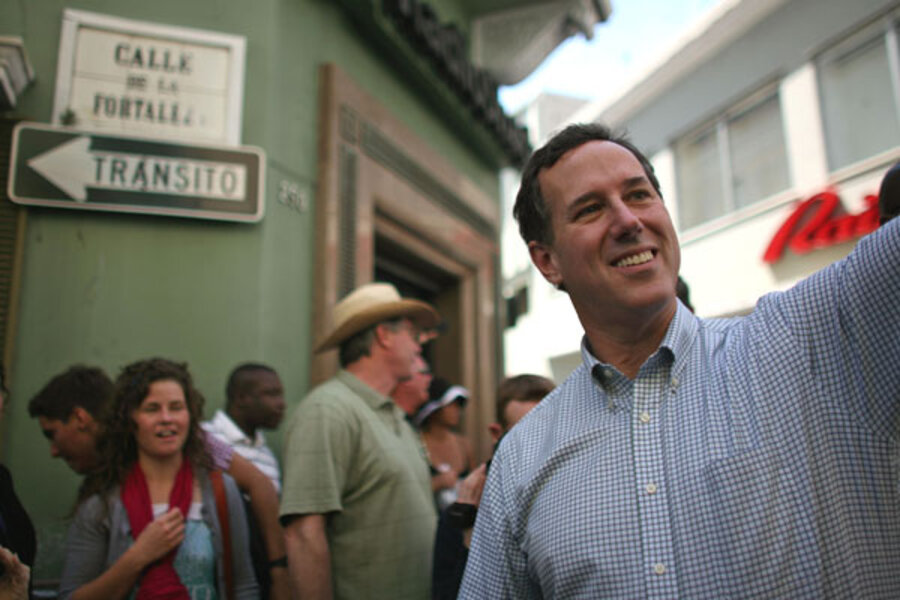Why Rick Santorum has only a 1 percent chance of stopping Mitt Romney
Loading...
| Washington
When the Republicans gather in Tampa, Fla., in August, the news media would love nothing more than a brokered or contested convention.
A convention that starts with any doubt about the identity of the nominee guarantees news. Otherwise it’s just a pep rally.
But as things look today, chances are slim that the Republicans won’t know in advance who they’re nominating, says Josh Putnam, an expert on “delegate math.”
“There’s a less than 1 percent chance that we go to a deadlocked convention or contested convention,” says Mr. Putnam, a political scientist at Davidson College in North Carolina. Putnam also writes the Frontloading HQ blog, where he crunches the numbers and explains the varying and complicated ways each state awards delegates.
Baked into Putnam’s “1 percent” assertion is his forecast that April will be good to Republican front-runner Mitt Romney.
“He will potentially do quite well throughout April and be able to peel off quite a few delegates in those states,” he says.
Seven states plus the District of Columbia hold primaries in April. The states are Maryland, Wisconsin, Connecticut, Delaware, New York, Pennsylvania, and Rhode Island. All but Wisconsin and Pennsylvania, home state of Romney’s top rival, Rick Santorum, are Romney territory, as is the District, where Mr. Santorum isn’t on the ballot.
Even before April, Romney stands to rack up a solid share of delegates. Puerto Rico, which holds winner-take-all caucuses on Sunday, is now a sure thing for Romney after Santorum’s gaffe on Wednesday, asserting that Puerto Ricans must adopt English as the official language if they want statehood.
Next Tuesday’s primary in Illinois should also give Romney a bounty of delegates, even if the popular vote is close. Santorum failed to file voter signatures in four congressional districts, making him ineligible to compete for some of the state’s delegates. Santorum is favored to win the Louisiana primary on March 24, but the proportional awarding of delegates means Romney will get some.
Last Tuesday’s contests presented a perfect example of how Romney can win even when he loses. The headline of the night was his close third-place finish in the Mississippi and Alabama primaries. But after winning big in the American Samoa and Hawaii caucuses, Romney won the night overall by six delegates.
The Associated Press “delegate tracker” now shows Romney in the lead with 495 delegates, Santorum in second with 252, Newt Gingrich with 131, Ron Paul with 48, and Jon Huntsman with two, with 1,144 needed to secure the nomination. (The keeper of the official count, the Republican National Committee, shows lower numbers, because it has not released updated delegate totals since the March 13 contests. Unlike the AP, the RNC also does not include the announced preferences of “super-delegates” – party leaders who can back whomever they want .)
But there’s another layer of analysis that works against Romney. After Tuesday, he had won only 41 percent of the delegates awarded so far. Going forward, Putnam says, Romney needs to win nearly half the delegates at stake if he is to reach the magic number of 1,144 by the convention.
For Santorum and Gingrich, the math is impossible, says Putnam. “Santorum has no mathematical shot at 1,144 if the current dynamic in this race is extended through the rest of the race,” he writes.
One factor that could change the dynamic is momentum, which has eluded all the candidates. But on the assumption that no one captures the Big Mo, the best bet for Santorum and Gingrich, then, is to keep Romney from getting to 1,144 before Tampa. Romney insists that won’t happen, media fantasies aside.







